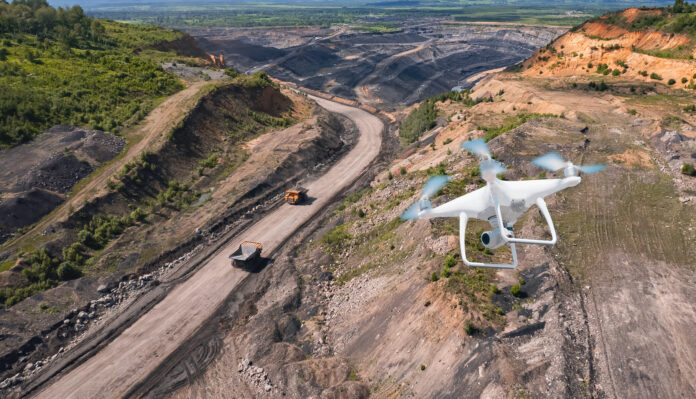Sustainable mining practices are necessary to minimize environmental impact, ensuring social responsibility, and promoting long-term viability in the mining industry. Leveraging geospatial technology plays a significant role in achieving these goals by providing valuable insights, enhancing efficiency, and facilitating informed decision-making.
Challenges Faced by the Mining Industry
The mining industry faces various challenges, including environmental degradation, resource depletion, and social conflicts. Balancing economic benefits with environmental and social impacts is key for the industry’s sustainability.
Role of Geospatial Technology in Mining Industry
Geospatial technology involves analyzing and interpreting data related to locations on Earth’s surface. It includes tools like GPS, GIS, and remote sensing, which help in capturing, storing, and analyzing spatial information.
Geospatial technology plays an important role in the mining industry by aiding in exploration, planning, monitoring, and environmental management. It helps in identifying mineral deposits, mapping terrain, and assessing environmental impacts.
Environmental Impact Assessment using Geospatial Technology
Environmental Impact Assessment (EIA) is essential for predicting and evaluating the potential environmental effects of mining activities. It helps in identifying risks, implementing mitigation measures, and ensuring compliance with regulations.
Tools and Techniques for Environmental Monitoring
Geospatial technology enables effective environmental monitoring through tools like satellite imagery, drones, and GIS software. These tools help in tracking changes in land use, detecting pollution, and assessing ecosystem health.
Monitoring and Mitigating Risks in Mining Operations
Risk assessment in mining involves identifying potential hazards, evaluating their likelihood and consequences, and implementing strategies to manage and mitigate risks. It helps in safeguarding workers, assets, and the environment.
Geospatial technology offers innovative solutions for risk mitigation in mining operations. Using real-time data, spatial analysis, and predictive modeling, mining companies can enhance safety measures, optimize workflows, and minimize negative impacts on surrounding areas.
Enhancing Resource Efficiency through Geospatial Analysis
When it comes to mining, every bit of resource counts. Geospatial analysis helps maximize resource efficiency, ensuring that no stone – or mineral – is left unturned. By precisely mapping out deposits and analyzing data, mining companies can streamline their operations and make the most of what the earth has to offer.
Data-driven Decision Making in Mining Operations
In the world of mining, decisions can make or break a project. Geospatial technology provides the essential data needed for informed decision-making. From determining the best drilling locations to monitoring environmental impacts, mining operations are increasingly relying on data-driven strategies to navigate the complexities of the industry.
Stakeholder Engagement and Transparency in Mining Projects
Mining projects don’t just involve digging in the ground – they dig into communities, economies, and environments. Engaging with stakeholders is important for the success of sustainable mining practices. Actively involving local communities, governments, and environmental groups, mining projects can ensure their operations are socially responsible and mutually beneficial.
Utilizing Geospatial Technology for Transparency
Transparency is significant in the mining industry, where operations are often scrutinized for their impact on the environment and local communities. Geospatial technology plays a vital role in promoting transparency by providing visual data that can be easily shared and understood. From tracking supply chains to monitoring land reclamation efforts, geospatial tools are paving the way for a more open and accountable mining sector.
Impact of Geospatial Technology on Mining Projects
The integration of geospatial technology has revolutionized the way mining projects are planned and executed. The technology provides real-time data on everything from ore quality to equipment maintenance, geospatial tools have helped mining companies operate more efficiently and responsibly and promoting sustainable mining practices.
Future Trends and Challenges in Sustainable Mining Practices
As technology continues to advance, so do the opportunities for sustainable mining practices. From automated drones for aerial surveys to AI-powered analytics for predictive maintenance, emerging technologies are reshaping the mining industry. Embracing these innovations, mining companies can stay ahead of the curve and drive positive change in their operations.
Despite the progress made in promoting sustainable mining practices, challenges persist. Issues such as resource depletion, environmental degradation, and social conflicts continue to plague the industry. Acknowledging these challenges and working together to find solutions, the mining sector can pave the way for a more sustainable future. Geospatial technology will undoubtedly play a crucial role in overcoming these obstacles and shaping the future of mining. The integration of geospatial technology into mining operations presents a promising avenue for promoting sustainability and responsible practices within the industry. Harnessing the power of data-driven insights, environmental monitoring, and stakeholder engagement, mining companies can navigate towards a more sustainable path that balances economic growth with social and environmental stewardship. As we look towards the future, continued innovation, collaboration, and commitment to sustainable mining practices will be key in shaping a more responsible and efficient mining industry for generations to come.



